5 Mythological Superheroes Who Could Star in Marvel Movies
Superheroes are nothing new, they were praised throughout antiquity. We present 5 Goddesses who could be the next movie legends!
Candy Bedworth 27 June 2024
Elizabeth of Austria, more commonly known as Sisi, was Empress of the Austrian-Habsburg Empire from 1854 until 1898. Captivating paintings and historical testimonies portray a wonderful woman with extremely long, chestnut, curly hair, and dressed in stunning clothes. She always looked gorgeous and graceful. However, this is only a small part of the story. Empress Sisi was indeed all of those things. But she also suffered from severe mental illness and health disorders. While we gaze at Sissi’s beautiful paintings, let’s discover more about her tormented soul, trapped in a gilded cage in more ways than one.
Sisi was born in 1837 in Munich, Germany. She was adventurous from a very young age, playing outdoors, riding horses, exploring the Bavarian forests, and climbing mountains with her seven brothers and sisters. Her father was Duke Maximilian Joseph, from whom Sisi inherited her progressive democratic ideals—a trait fairly uncommon in royalty at the time. Her mother, Duchess Ludovika, passed down a love for privacy and a fear of public duties. Unfortunately, these traits would not help Sisi when she became an Empress.
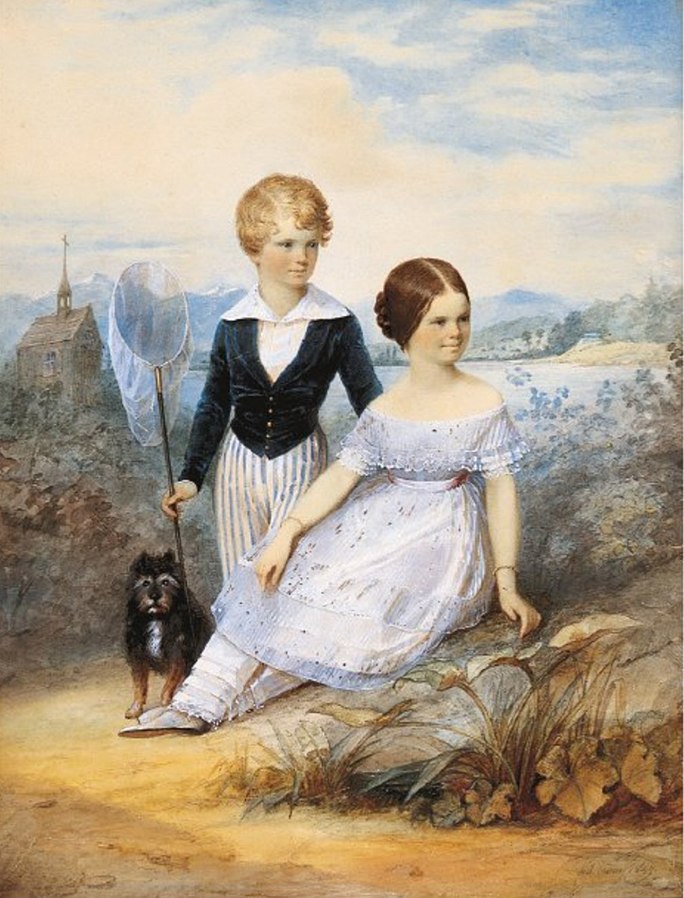
Carl Haag, Princess Elisabeth of Austria with Her Brother Carl Theodor and Their Dog Bummerl in Possenhofen Castle, 1849, Sisi Museum Wien, Vienna, Austria.
In 1853, Duchess Ludovica and Princess Sophia, Emperor Franz Joseph’s mother, had intended for the young ruler to marry Dutchess Helene. However, when Franz Joseph saw her younger sister Sisi, he fell in love with her. Even though she liked him, Sisi was so nervous that during their courtship she couldn’t eat. Two days later, Franz Joseph asked to marry her. Thus, on April 18th, 1854, the two got married.
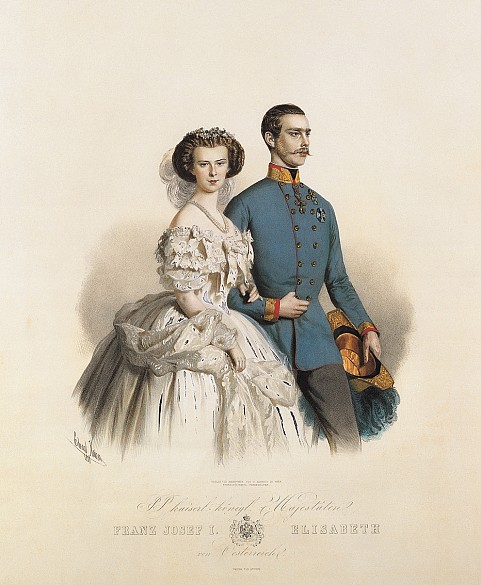
Eduard Kaiser, Emperor Franz Joseph and Empress Elisabeth at Young Age, 1858, Schönbrunn Palace, Vienna, Austria.
However, the situation did not improve for Empress Sisi. She was always shy and could not withstand the high pressures of living in the court. Free-minded and progressive, she tried to escape the palace and travel the world. On the other hand, Franz Joseph adored her and loved her deeply. He always wanted to look at her, so he commissioned portraits of Sisi and placed them in his office, where he spent most of his time.
The two of them had four children, but only three survived past infancy: Princess Gisela, Prince Rudolf, and Archduchess Marie Valerie.
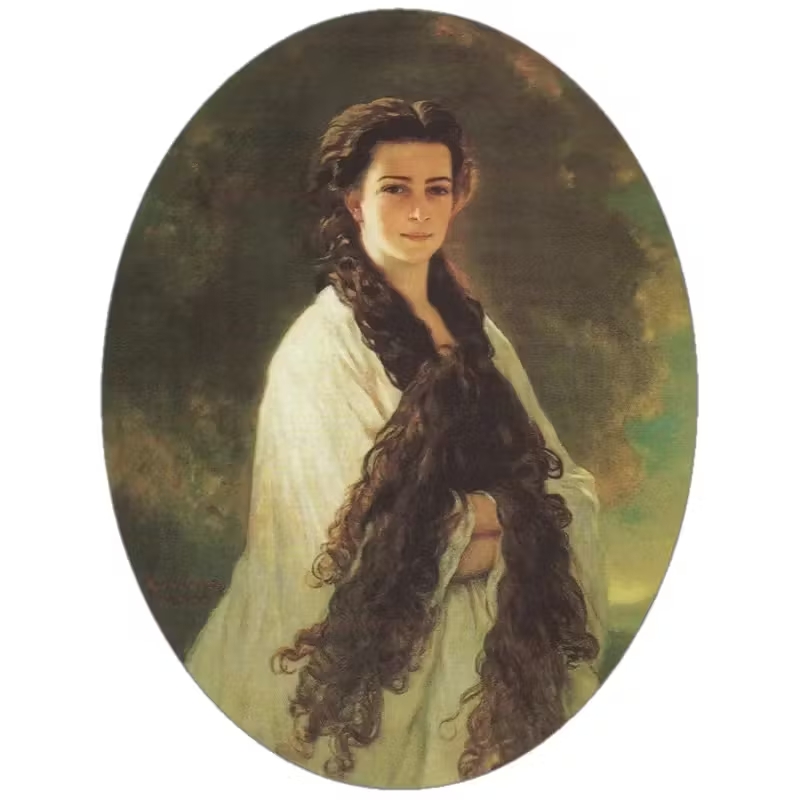
Franz Xaver Winterhalter, Portrait of Elisabeth of Austria, 1864, Hofburg, Vienna, Austria.
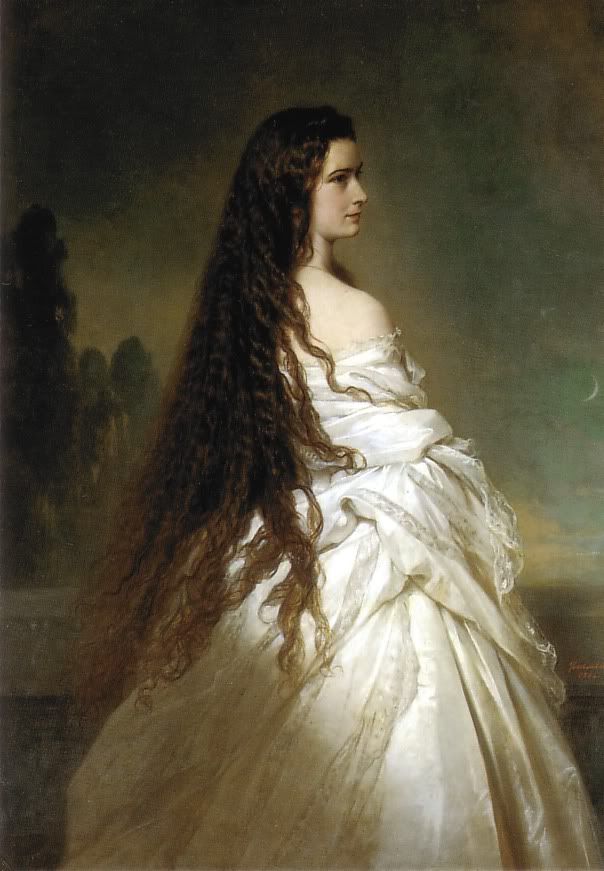
Franz Xaver Winterhalter, Empress Elisabeth of Austria, 1865, Hofburg, Vienna, Austria.
Empress Sisi was obsessed with her beauty and looks; she spent hours looking after herself. In fact, she spent three hours every day taking care of her ankle-length hair. An extra hour was devoted to cinching her tiny waist. She was extremely careful about her figure, sticking to a very strict diet and exercising fanatically. She did both to a such degree that today they would be considered symptoms of anorexia.
In order to maintain her slim figure (she weighed 47 kilos and her height was 1,72 cm), she ate only thin broth for a time. Later, she only fed on raw milk (Sisi always traveled with her cow), oranges, and eggs. The only exceptions she made in her nutrition were violet ice cream from Demel Confectioner and the original Sacher torte, a chocolate cake from the Sacher Hotel, both located in Vienna.
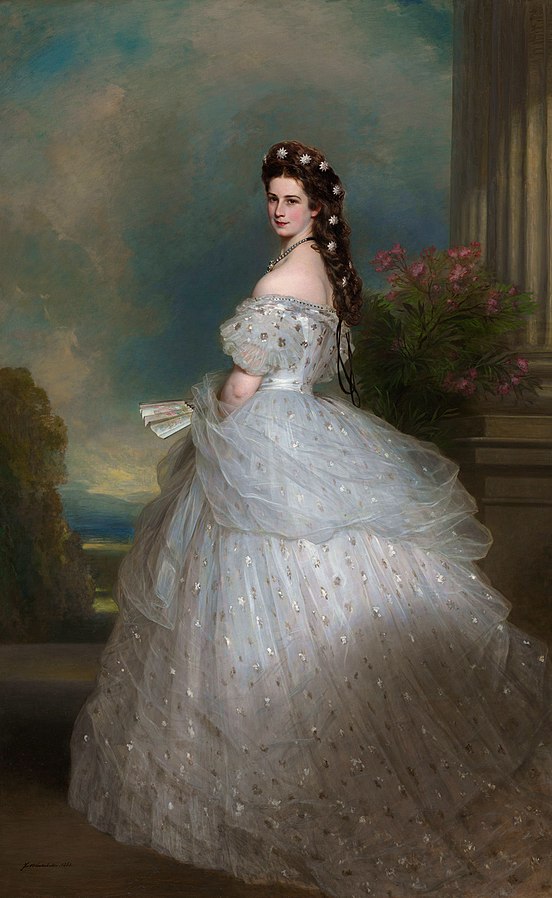
Franz Xaver Winterhalter, Empress Elisabeth of Austria, 1865, Hofburg, Vienna, Austria.
Empress Sisi exercised and stayed active for hours every day. Her workout routine included horseback riding, fencing, fast-paced hikes, and exercises adapted from the circus. In each of her palaces she had personal workout rooms with equipment to lift weights, training rings, etc. It is said that her ladies-in-waiting could not keep up with her during the workouts. Indeed, her exercises and the tempo were extremely difficult, and Sisi was one of the best of her time at the sports she did.
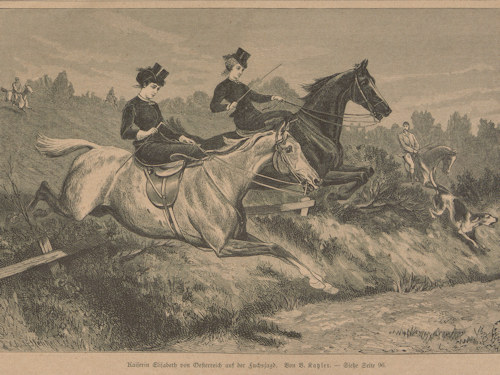
Vinzenz Katzler, Empress Elisabeth Fox Hunting, 1882, Wien Museum, Vienna, Austria.
Sisi was known as the comforter of the “common” people. She often arrived at hospitals or charity wards unannounced and only with a lady-in-waiting to accompany her. There, she spent time speaking to patients about their needs or held hands with the dying ones. It is admirable how down-to-earth she was, as this behavior was quite uncommon for royalty at the time.
Psychiatry was one subject that fascinated Sisi. She believed that the innovations for the treatment of the mentally unstable were extraordinary and played around with the idea of opening her own psychiatric hospital. To justify or explain her passion for psychiatry, she quoted a lyric from Shakespeare, which said that the crazy ones are often the most sensitive and sensible.
Empress Sisi was also very fond of Hungary. When Franz Joseph and Sisi became king and queen of Hungary in 1867, the Hungarians adored her. She did not hold back from the progressive ideas she inherited from her father and tried to provide as much freedom as possible to Hungary.
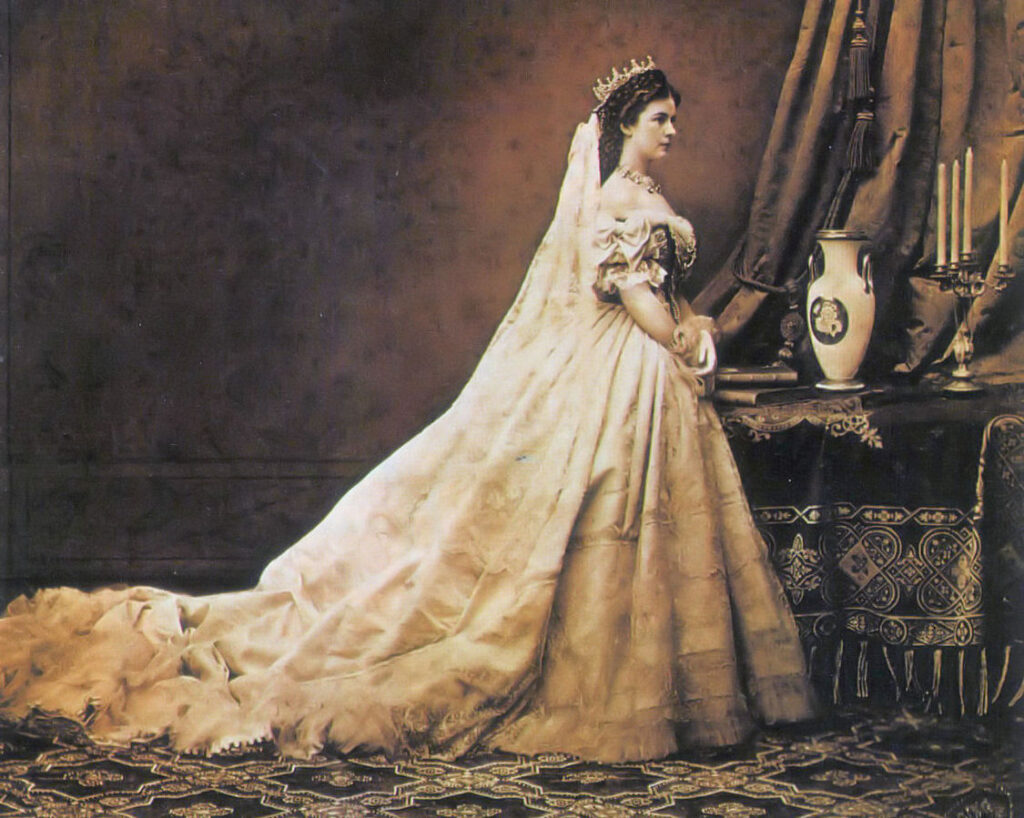
Empress Sisi of Austria in Hungarian Coronation Dress, 1867. Wikimedia Commons.
The presented paintings depict a gorgeous woman, a royalty, dressed in the most beautiful clothes. In her portraits she’s always filled with joy, healthy, and glowing. Unfortunately, it was far from reality. As vigorous as she was with certain things, she was just as fragile privately. Empress Sisi was always melancholic and did not like public life. When she had to fulfill her duties, she tried to do it in her way. This behavior was treated as childish by her mother-in-law, Archduchess Sophie, as well as Franz Joseph, although he was more lenient and forgiving and tried to give her as much freedom as his duties and position allowed him.
In 1862, Sisi went through a nervous breakdown from the pressures of the palace. After that, she tried to spend most of her time away from the Hofburg Palace and traveled to Greece, Ireland, Switzerland, England, and Hungary. However, by the 1880s, it was very clear she suffered from a serious mental illness. Her daughter, Marie Valerie, found her one day in a bathtub laughing hysterically. The Empress also spoke of suicide often to her husband, something that terrified him, and often used drugs, such as cocaine, as an anti-depressant. It is worth noting, however, they were common medication, and Sisi was not considered a drug addict at that time.
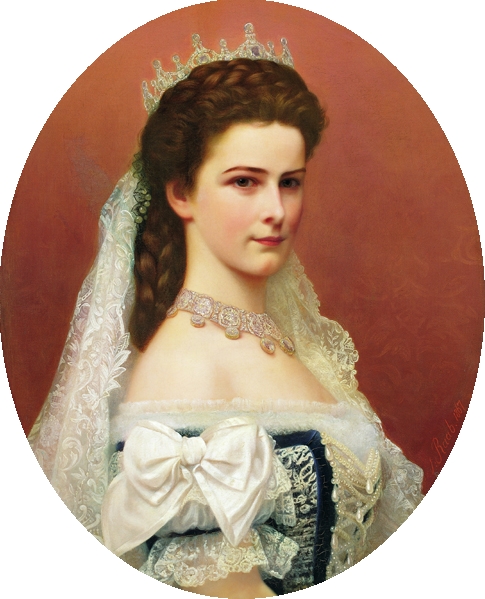
Georg Raab, Empress Elisabeth in Hungarian Coronation Dress and Rose Diadem, 1867, Hofburg, Vienna, Austria.
In 1889, her beloved son Prince Rudolf was found dead along with his 17-year-old mistress, Mary Vetsera. This event caused Sisi’s deep depression from which she never recovered.
Both Rudolf and Vetsera had left notes behind. However, there were rumors regarding the cause of their death. For a while, it was believed that Vetsera poisoned Rudolf and then she shot herself. But, a little later, it was proven that Rudolf had shot his mistress and then himself, something that made Sisi even more sad and desperate.
Sisi’s liberal and progressive son was dead. She came to realize that this was the beginning of the end of the Austrian-Hungarian Empire. As Rudolf was Franz Joseph’s only son, and he didn’t have a son of his own, the succession passed to the Emperor’s Brother, Archduke Karl Ludwig, and his son, Frans Ferdinand. This succession set off the chain of events that evidently led to World War I.
Sisi’s weight started plummeting. Always dressed in black, with a veil covering her face, she traveled aimlessly across Europe and North Africa. She waited for her death and refused to travel with police protection. As a souvenir from these travels, at the age of 51, she got an anchor tattoo on her arm, signifying the stability and root she felt she never had.
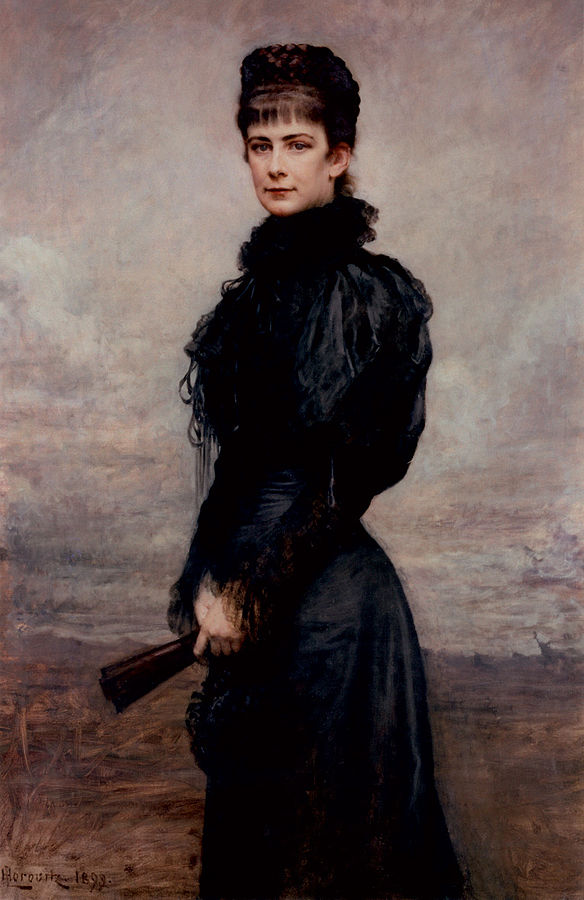
Leopold Horowitz, Empress Elisabeth of Austria in Mourning Dress, 1899. Wikimedia Commons.
On September 10th, 1898, Sisi visited Geneva under a fake name. At that time, Luigi Lucheni, an Italian anarchist, was also in town, to assassinate Prince Henri of Orléans. News of the Empress’ visit leaked and Prince Henri changed his itinerary and kill the Empress instead. So, as she was walking down a dock to board a ship, he attacked her with a knife.
Sisi stood up, thinking she was only punched. However, as soon as she boarded the ship, she collapsed. Even though she received instant medical help, she died of internal bleeding from the stabbing, with only one drop of blood staining her dress.
DailyArt Magazine needs your support. Every contribution, however big or small, is very valuable for our future. Thanks to it, we will be able to sustain and grow the Magazine. Thank you for your help!